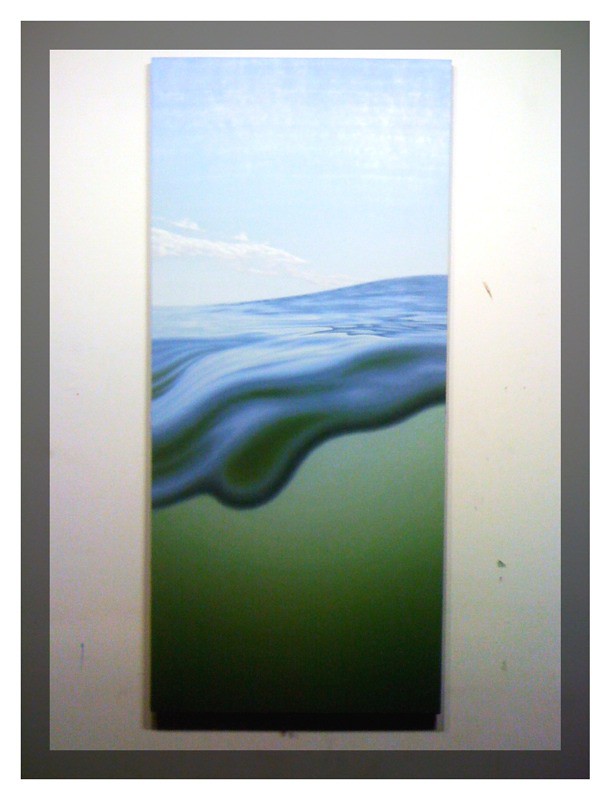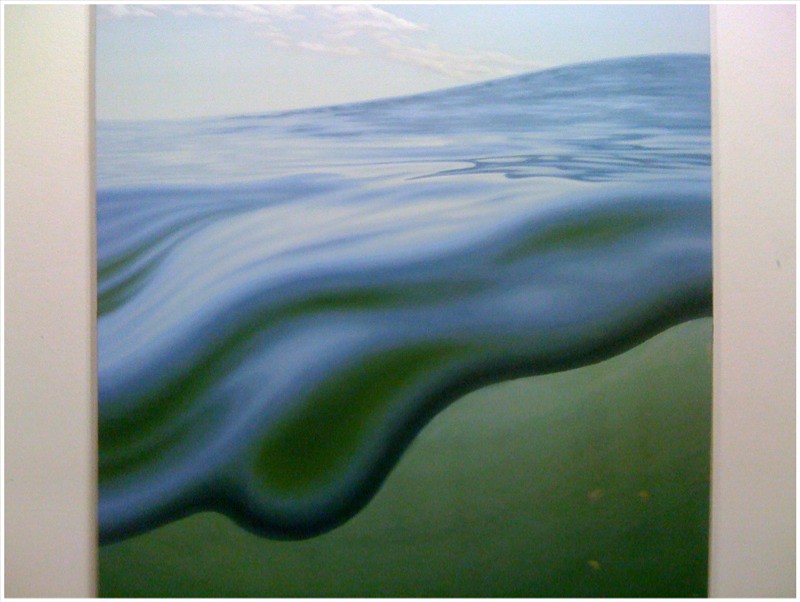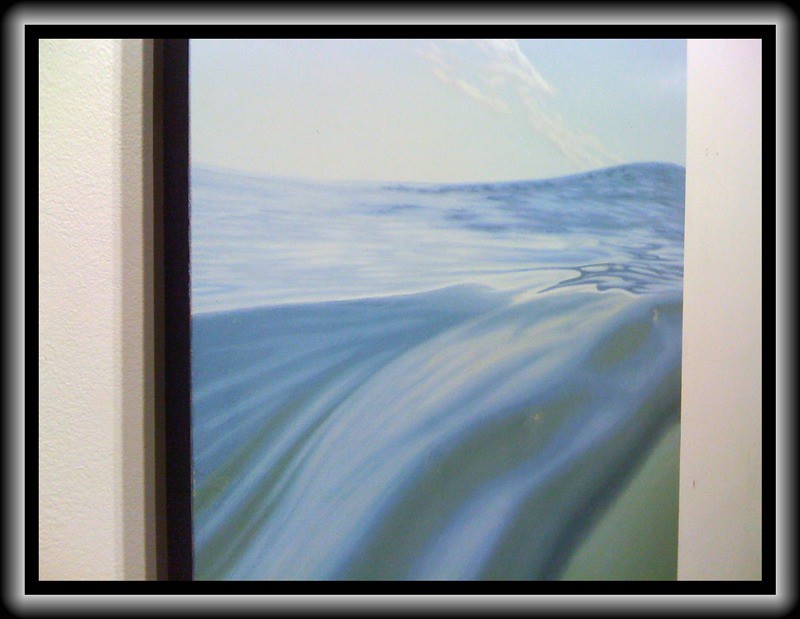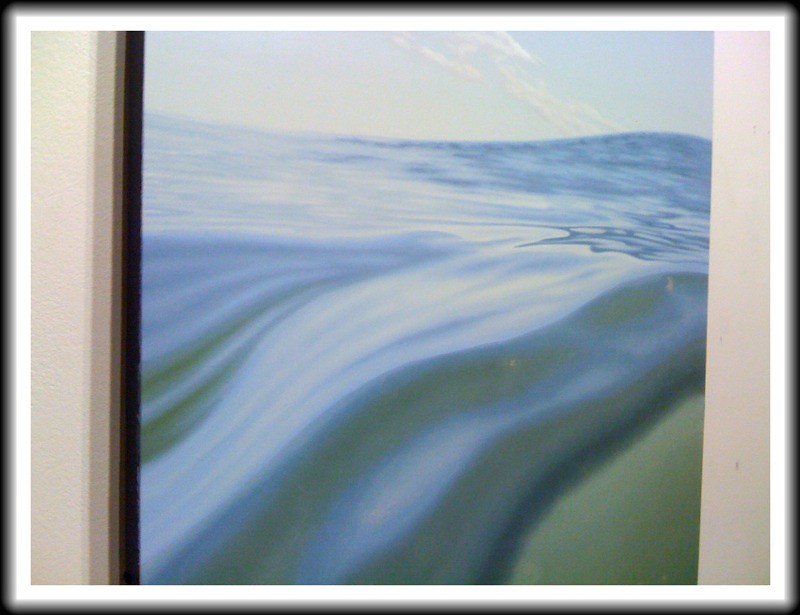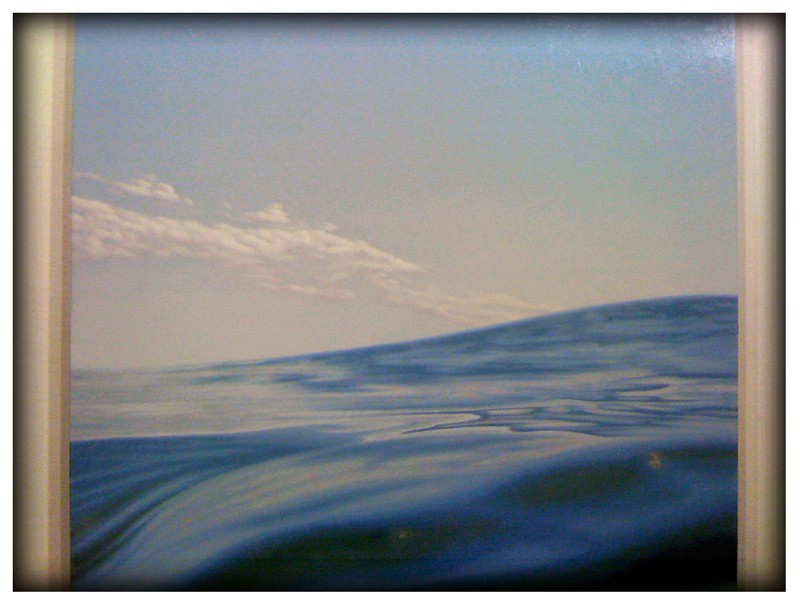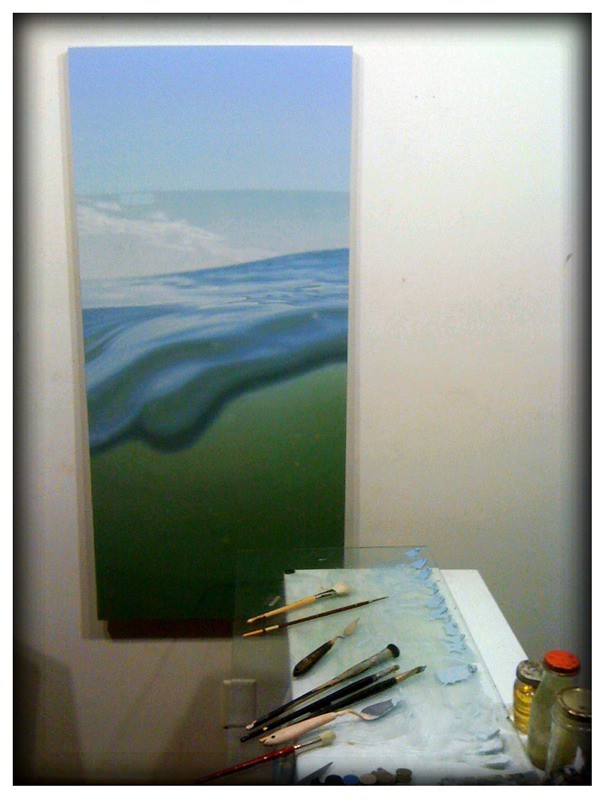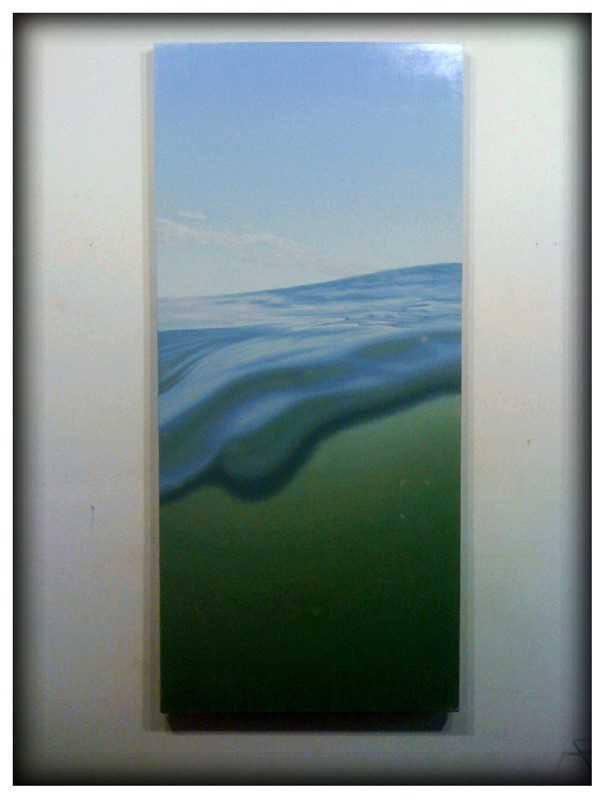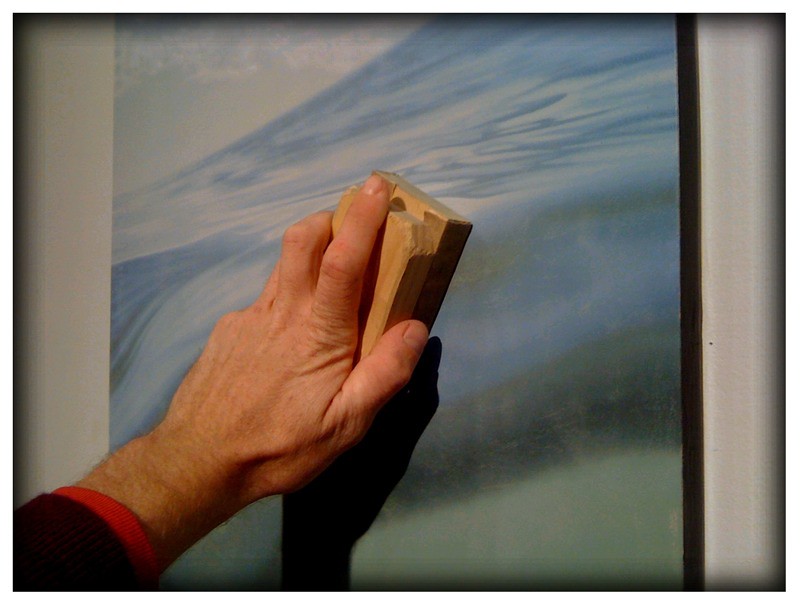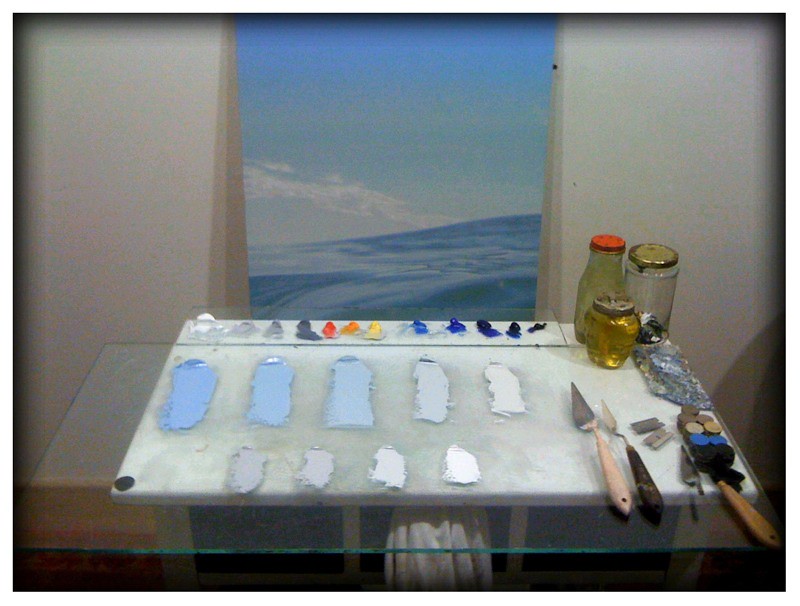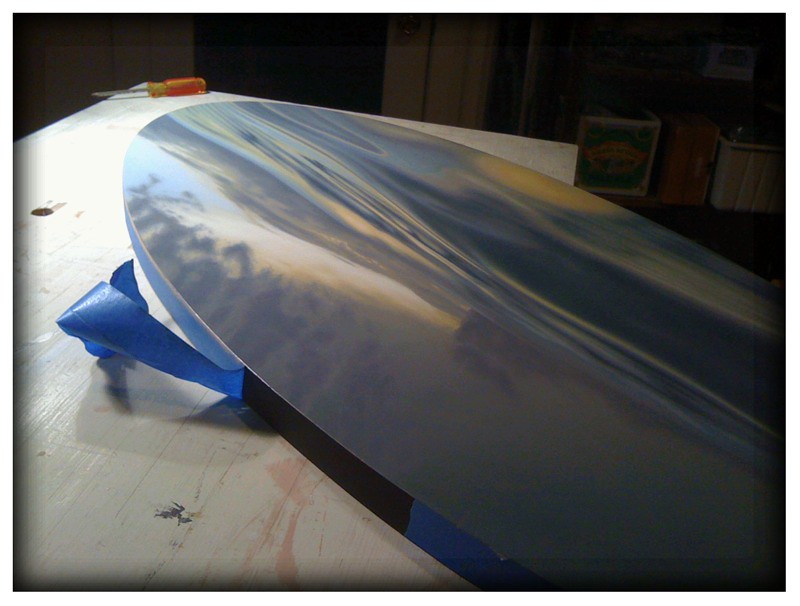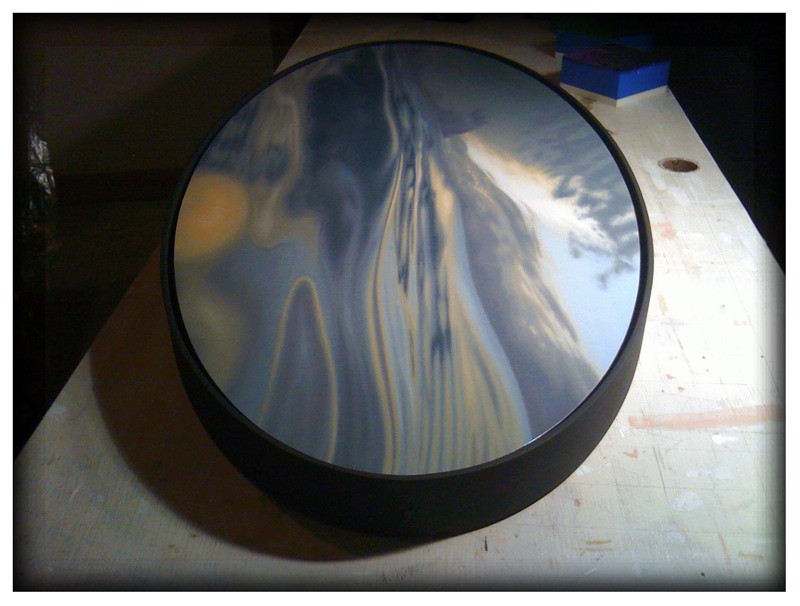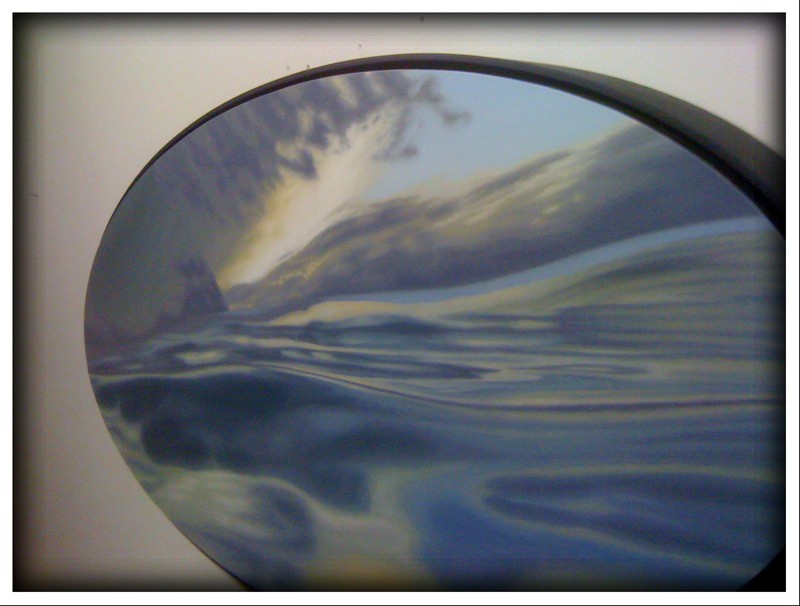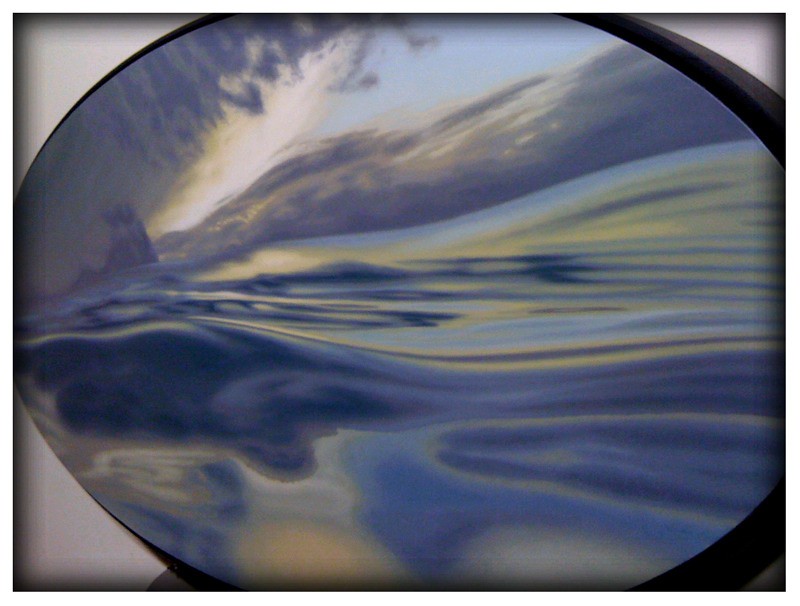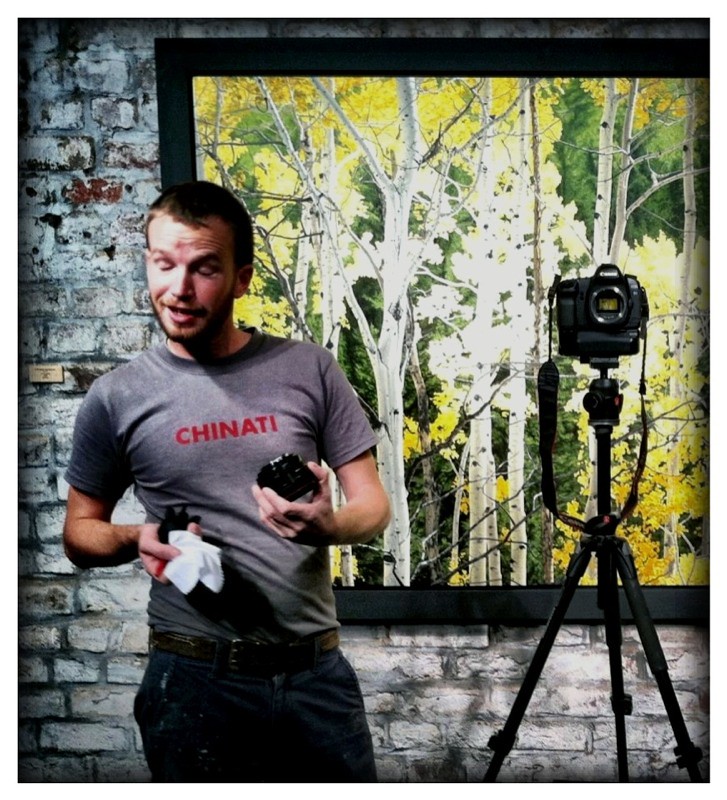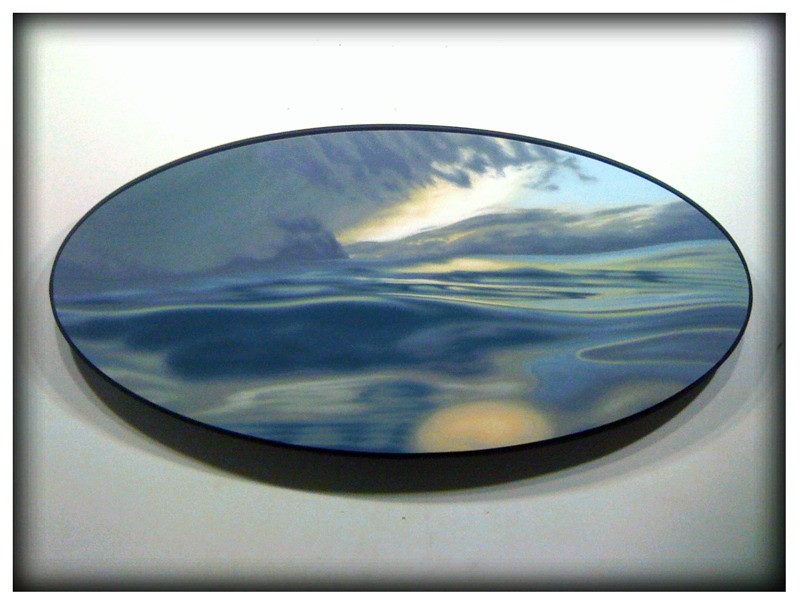
The second is to give it a slight glaze layer. This is really an isolation layer because there is no color in it, as it is a transparent layer. But it gives the painting an even sheen until it can be varnished, and then when the painting is varnished, it will keep the varnish from adhering to the paint. Years (even decades) down the road, the varnish can be removed and reapplied without affecting the paint layers.

Now all that is left to do is sign the back of the painting and leave it to dry. Hopefully the couple who loved it in it's process will also love the completed painting and it will soon be hanging in a new home!
- jb boyd
